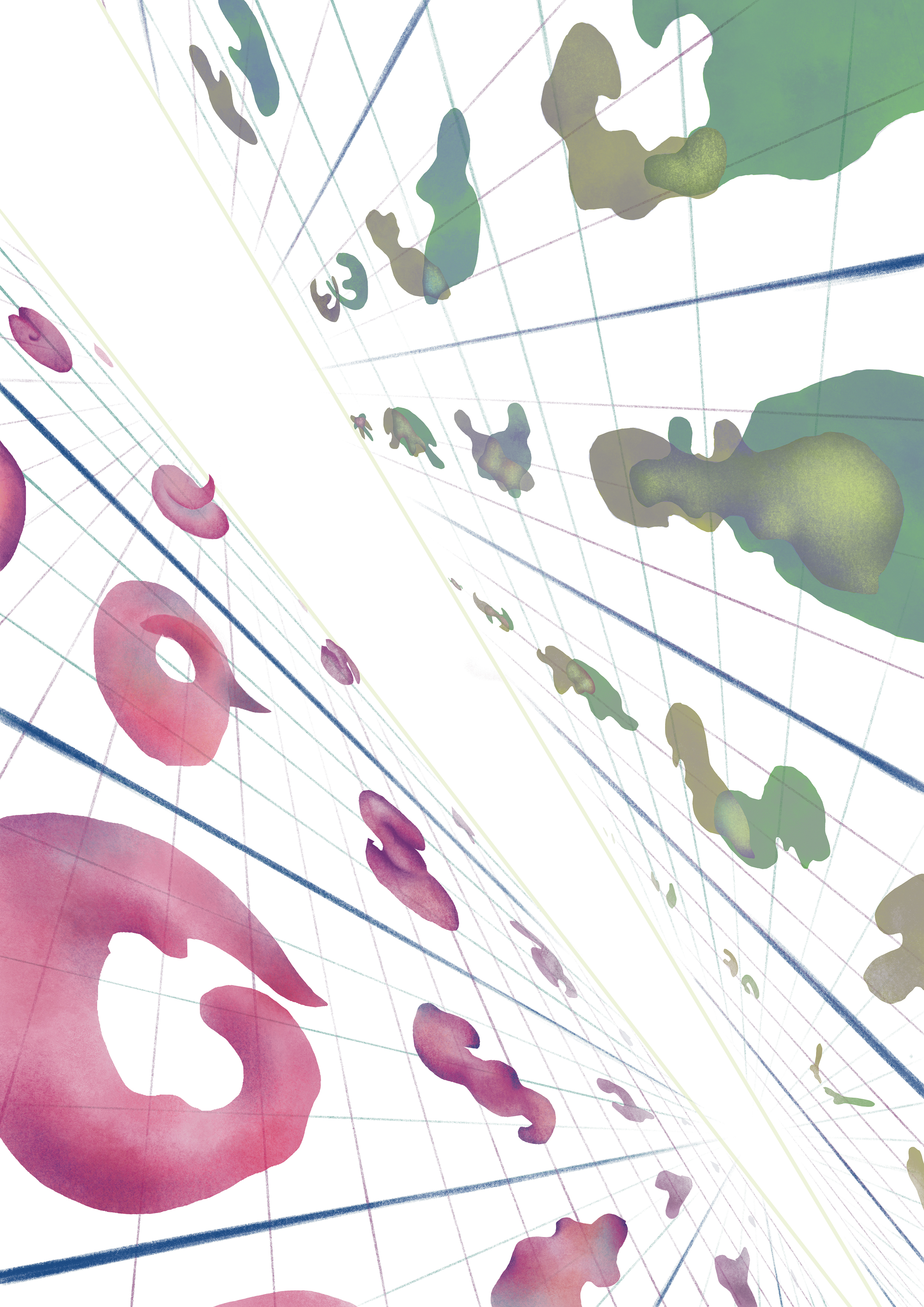A fixed point is a point that does not move when subjected to a given transformation. Theorems guaranteeing the existence of such points have a wide application not only in mathematics, but also in economics or in Google's search engine. Such a new theorem has recently been discovered: every isometry has a fixed point when viewed in an extended space.
Views 6551
Reading time 4 min
published on May 18, 2024
Illustration realized in the framework of a collaboration between the Image/Recit option of the HEAD (Haute École d'Art et de Design) - Genève and the Faculty of Sciences of the University of Geneva.What does John Nash's Nobel-winning equilibrium in economics and Google's search engine have in common?
They all crucially rely on a fixed-point result. In mathematics, the use of fixed-point theorems is found in many instances, unsurprisingly because it is the way to solve most equations. But what is a fixed point? Intuitively, a fixed point is a point that does not move when we consider a transformation of the space.
For example, take a disc and rotate it around its centre. This transformation moves all the points except the centre of the disc, which remains fixed. A rotation, therefore, has a fixed point.
With this same disc, we can imagine another transformation: we choose a straight line through the centre of the disc and look at the mirror image of each point reflected by this line. With this transformation, all the points on the left of the line are mirrored on the right, and all the points on the right of the line are mirrored to the left. Only the points on the mirror line do not move. As a line or a line segment contains an infinite number of points, we have an infinite number of fixed points.
Some transformations have no fixed point: take an infinite sheet of paper and move it in a given direction by a given distance. All the points of the sheet of paper will have moved and there is no fixed point.
Two of the most celebrated and consequential fixed-point theorems are that of Brouwer from 1911 and the contraction mapping principle as formulated abstractly by Banach in 1920. Nash used the first to define equilibrium in economics, and the second is hidden in Google's search engine.
To better understand the power of the Banach fixed point theorem, let's have a look at the following example: Take two equal-sized sheets of paper and place one on top of the other so that every point on the top sheet can be matched to its corresponding point on the bottom sheet. Now, crumple the top sheet and place it somewhere on top of the flat sheet of paper. The theorem says that a point necessarily exists on the top sheet that lies precisely above its "mapping point" on the bottom sheet.
Anders Karlsson from University of Geneva recently discovered a new isometric fixed-point theorem. There are significant implications for the field of mathematics, and this new theorem offers a fresh perspective on fixed-point theorems.
This fixed-point theorem applies to any isometry, which means a transformation that preserves all distances between points. For example, the three transformations defined above (rotation, symmetry, and translation) are isometries.
For this to be true, we will need to add an element to our space. Mathematicians call this process a “compactification”, making an infinite space into something “compact”. Let’s go back to the translation above which has no fixed point in the plane. The plane is infinite in all directions and has no border. But now, imagine adding a border around it. This boundary lies at infinity and adding it to the plane will make it “compact”. Think that each point on the boundary is representing one direction and the whole boundary all the possible directions. A rotation will move the points within this boundary. But a translation which is defined by moving points in one, and only one direction will keep one point on the boundary unchanged, the point that represents the direction of the translation. After the compactification of our plane, a translation has also a fixed point.
Let's look at another example: imagine a hexagonal lattice and consider the following transformation: choose one hexagon and send each corner to its left-hand neighbour. This operation induces a transformation on the whole lattice, which is, in fact, a rotation. The centre of this rotation is the centre of the hexagon you have chosen. It does not belong to the lattice. So, this transformation has no fixed point in the space formed by the lattice. Mathematicians invented a special compactification, that works for any metric space. For the lattice, it will somehow “fill” it, allowing for our transformation to have a fixed point.
This new result applies to many mathematical fields, such as dynamical systems which study how things change over time like planetary motion or economic models, or operator theory, which provides mathematical tools to understand and predict these changes. Studies are underway to find ways of compactification for various spaces and would lead to further applications.
As mentioned above, the use of fixed-point results is fundamental in theoretical economics, in physics and more generally in science. The nature of mathematics is such that its principles apply simultaneously to a wide range of subjects. As always in fundamental research, the future usage of a theory is impossible to predict but promises exciting new applications.
Original Article:
Karlsson, A. (2024). A Metric Fixed Point Theorem and Some of Its Applications. Geometric and Functional Analysis, 34(2), 486–511. https://doi.org/10.1007/s00039-024-00658-x
 Maths, Physics & Chemistry
Maths, Physics & Chemistry



